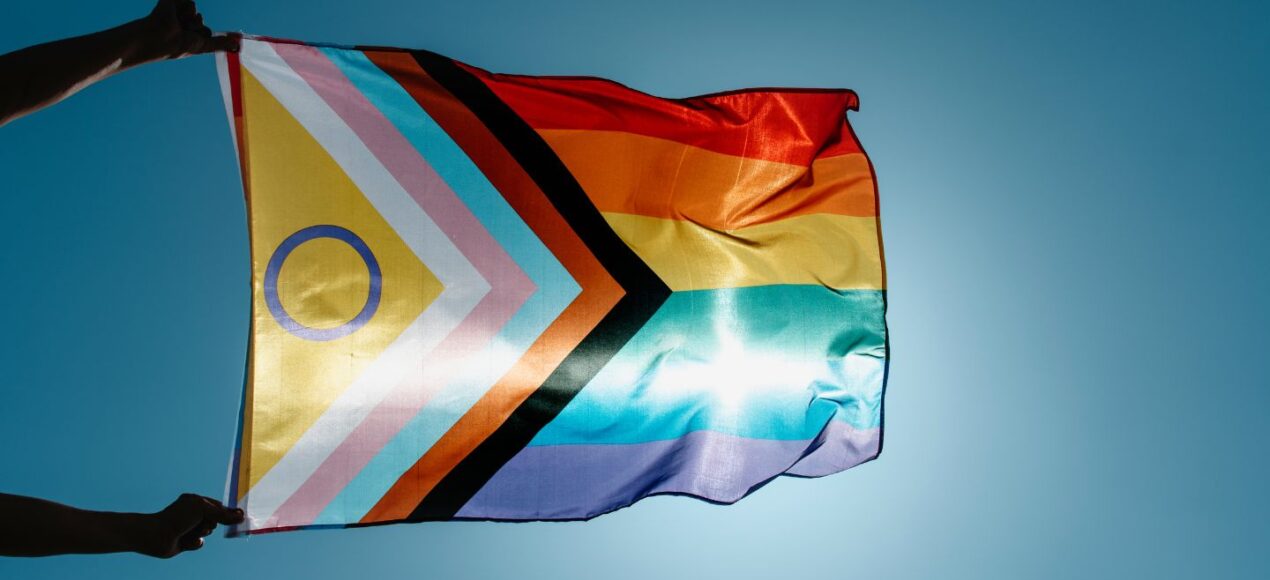Hope’s Destiny in Horsham, PA, offers evidence-based outpatient care for mental health and co-occurring disorders, empowering lasting change through compassionate treatment.
601 Dresher Rd, Suite 105, Horsham, PA 19044

Jun 13, 2024
Pride Month, also called LGBT Pride Month, celebrates members of the LGBTQ community. It also works to raise awareness of the many issues and barriers still faced by people who are lesbian, bisexual, gay, transgender, or queer.
For many LGBTQ people, they begin facing these issues in adolescence. Bullying, prejudice, pay gaps, discrimination, violence, and hate crimes are just a few.
These issues in turn can cause LGBTQ people to turn to substance abuse (drugs and alcohol) as a way to cope with stressors.
And one of the goals of Pride Month is to show that with inclusive, affirming treatment, LGTBQ teens can best their alcohol or drug abuse issues long-term.
Pride Month is celebrated throughout the U.S., with various awareness events, parades, and other gatherings held throughout the month of June each year.
With awareness comes sharing of information, including information related to the many struggles people in a sexual minority face daily.
For example, Pride Month can help illuminate the high rates of alcohol and drug use among LGBT teens. This issue is troubling, since substance use during teen years is a known risk factor for long-term addiction (substance use disorder or SUD).
In 2021, The Trevor Project, a LGBTQ-forward organization, completed a survey on LGBTQ youth mental health.
The survey found that:
Overall, LGBTQ youth are at increased risk of experiencing drug or alcohol abuse in nearly all demographic groups.
That is, LGBTQ youth have:
LGBTQ people who abuse drugs or alcohol may do so for a number of reasons.
First, fear of rejection among peers, family, and in society due to expressing gender identity remains a struggle in the LGBTQ community. This is especially true in teens.
Social stigma can lead to prejudice, acts of violence, bullying, and abuse. In order to self-medicate the effects of these injustices, LGBT teens may seek drugs or alcohol.
Teens who face physical harm (violence) due to their sexual orientation or gender identity may want a way to escape from it.
In fact, research shows that LGBTQ youth often use substances to deal with stressors associated with being in a sexual minority and other experiences.
In the national survey, regular substance abuse of both alcohol and illicit drugs was reported at higher rates for teens who had experienced conversion therapy.
This form of therapy attempts to change a person’s sexual identity or gender identity through behavior modification, counseling, spiritual counseling, and other methods. Research has shown that these methods have long-lasting, harmful effects.
There are some factors which may place LGTBQ adolescents at a greater risk of falling into an addiction following alcohol or drug use.
These risk factors include:
LGBT youth who have experienced these struggles may be at a higher risk of developing an addiction, and the negative health outcomes which come with it.
Fortunately, swift health care with LGBTQ-friendly providers can address alcohol and drug use and help teens learn to cope with them for lasting recovery.
Many organizations that celebrate Pride Month can put teens and their parents in touch with resources to help them start the road to recovery.
Left untreated, substance use disorder can lead to negative health effects for teens. For example, continued drug use and alcohol use.
In addition, LGBTQ teen substance use is linked to higher suicide attempts.
Finally, drug and alcohol use can greatly affect both your physical and mental well-being, including:
To help lesbian, gay, bisexual, and transgender youth recover from drug and alcohol abuse, more treatment centers must offer inclusive, affirming care.
This means providing addiction treatment for young people that not only addresses substance abuse and mental health issues, but that provides a safe environment.
At Hope’s Destiny in Pennsylvania, we do just that.
Our outpatient LGBTQ-friendly rehab program offers treatment programs that are welcoming and affirming to lesbian, gay, bi, and transgender people.
Evidence-based treatments in our teen rehab programs include:
We also provide ongoing psychiatric evaluations before the start of a program and throughout treatment to identify at-risk behavior and adjust care as needed.
Pride Month can help raise awareness of the substance abuse issues in teens and high school students who are LGBTQ, as well as the related issues such as suicide risk.
But to address these issues, there are a few ways to take action, including:
If your LGBTQ teen needs compassionate, affirming addiction rehab care in Pennsylvania, Hope’s Destiny can help.
There’s no better time than Pride Month to help more lesbian, gay, bisexual, and transgender individuals conquer the substance use issues they shouldn’t have to face.
For intensive, outpatient programs offering evidence-based treatment methods, reach out to us today.

At Hope’s Destiny, we know that seeking help takes courage, and we’re ready to walk beside you every step of the way. Our personalized, evidence-based programs provide the support you or your loved one needs to build a stronger tomorrow because everyone deserves a chance to write their own story of recovery.
Copyright © 2025 Hope’s Destiny | All Rights Reserved
PRIVACY POLICY | TERMS OF SERVICE